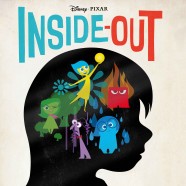
This blog builds on my previous post (“Inside Out”) about “emotion(s)”; specifically the difference between “categorical emotion” and “primary emotion.” My previous post lauds Disney/Pixar’s delightfully animated movie, Inside Out, which depicts how our brains process emotion. Briefly (to repeat an excerpt from the previous blog), the movie depicts:
‘Riley – a happy-go-lucky girl from Minnesota who is followed throughout the movie by five, basic animations of her emotions: Joy, Sadness, Disgust, Anger, and Fear. Each color-coded manifestation—Joy: Yellow; Sadness: Blue; Disgust: Green; Anger: Red; Fear: Purple—lives in the Headquarters of Riley’s conscious mind. Joy, the principal narrator (voice of Amy Poehler), works very hard to keep Riley in a happy state; which is not difficult to do in the secure setting of her Minnesota childhood home. All is about to change.
When Riley turns 11-years-old, her beloved father takes a new job in San Francisco. Sadness begins tainting some of Riley’s happy memories, which understandably triggers the other basic emotions. Led by Joy and Sadness, an odyssey ensues to restore Riley’s happy equilibrium. Things get worse, much worse, before there’s any sign of improvement. Emotions and memories ebb and flow, and threaten to swallow up the happy-go-lucky girl from Minnesota, who is now distancing from parents, friends, and hobbies.
While Joy spends most of the movie trying to keep Sadness away from Riley, the denouement of Inside Out unfolds when Riley is finally allowed to feel her feelings. What pretention, distraction, compulsion, and suppression were unable to do – empathy and compassion accomplished.’
While the movie brilliantly depicts the importance of emotions to mental health and well-being, it primarily emphasizes the importance of “basic” or “categorical” emotions; such as feelings of anger, sadness, happiness, and the like. In other words, “categorical” emotions are what we generally mean when we talk about emotions; the emotional descriptors that emerge when we become conscious of our feelings. But, research identifies another kind of emotion—a deep(er) down emotion–which the Inside Out movie does not purport to address. It has been called by some researchers, “primary” emotion.
Whereas “categorical” emotion implies the conscious awareness of how we feel, “primary” emotion denotes the nonconscious, physiological processes that precede conscious feelings. I noted these nonconscious, physiological processes in my previous blog; referencing the analogy of William James who argued that we don’t run from a bear because we’re afraid. Instead, we are afraid because we run. This is to say:
“Before we are consciously aware of a particular feeling, our bodies have already begun to react.”
While researchers differ in wanting to call these nonconscious, physiological processes “emotions”–for example, Joseph LeDoux (2015) prefers “defense responses”, while Antonio Damasio (1994; 2013) prefers “somatic markers” and “action programs”), modern neuroscience seems to agree that emotions are prompted by bodily responses; what some call “primary” emotions.
Psychiatrist Curt Thompson, M.D. (2010) gives the following example:
“Imagine for a moment sitting with friends in their living room. The sky is bright outside their picture window, and you’re immersed in a warm, friendly conversation. You are comfortable and relaxed…feeling contented and happy in the presence of your friends….
As you talk, you and your friends hear something rap on the window. How do you react? Your initial response is driven by primary emotion. When startled, parts of your peripheral nervous system respond without your conscious awareness. This means your breathing and heart rates, along with your blood pressure, muscle tone, and sweat rate, elevate. In addition, your brain signals your adrenal glands to increase the production of stress hormones.
Brain time is measured in microseconds to nanoseconds, so long before you become consciously aware that something has hit the window, your central nervous system is collecting and synthesizing data from several sources and preparing your physical response….Your brain does not ‘think’ of this event initially in terms of something hitting a window so much as it registers a cumulative shift in the patterns of electrical firing throughout the various neural networks that have been activated in response to this particular stimulus.
Actually, what happens next will depend a great deal on what has hit the window. Let’s say a small bird accidentally flew into it and glanced off the glass. You might all briefly turn your attention to the noise, but if the bird flies off unharmed, your attention will quickly return to your conversation and your physiological readings return to normal within a few seconds.
How does your response differ if…the rapping noise comes from another friend greeting the rest of you just before he enters the house and joins you in the living room? In this case, your primary physical/mental responses are likely to be more lasting and eventually lead to a predictable feeling of pleasure at the arrival of your friend. Long before you are consciously aware of feeling pleasure, however, your body is sending the basic signals that predispose you to have that particular feeling….(Y)our brain is able to compare this particular state (happiness) to other times when you have experienced it. It ‘remembers’ those occasions through the circuitry responsible for implicit memory.
But what if the knocking comes from a stranger wielding a handgun? You experience an entirely different set of emotions in this scenario. Those emotions quickly cascade into a state you might describe as fear. Your body registers signals that lead to feelings caused by fright, comparing your fear to other situations that stirred up this feeling….
This constant monitoring and shifting in energy is the activity around which the brain organizes itself. This is emotion. (My note: Or, what researchers LeDoux and Damasio might call the bodily precursors to consciously apprehended emotions.) The origin of our word ‘emotion’ is grounded in the idea of e-motion, or preparing for motion. This is why the phenomenon of emotion is deeply tied to ongoing action or movement. We cannot separate what we feel from what we do….
Primary emotions are experienced through your sensory perceptions (such as heaviness in your chest or tingling in your hands or feet) and more diffuse mental imagery; they are further expressed by other physical behaviors. For example, as part of your primary response, you may cross your arms, set your jaw, or tighten the muscles in your back or neck. You may lift your eyebrows, groan, frown, or smile. These physical phenomena in turn reinforce the sensory feedback loop by sending messages back to the brain that inform it of its ongoing state. (My note: What Antonio Damasio calls “somatic markers.”)
Eventually, as these moments expand into longer, more intensified time periods, we become aware (if we are paying attention) of the qualitatively distinct states of feelings we call ‘categorical emotion.’” Which brings us full circle to Inside Out.
In the movie Inside Out, Riley’s emotions began “deep down” inside, then “consciously surfaced” as joy, fear, anger, sadness, then joy again. Therapy asks clients to pay attention to both levels of emotion; not just “on the surface,” but “deep down.”
Bill Bray, Colorado Springs

